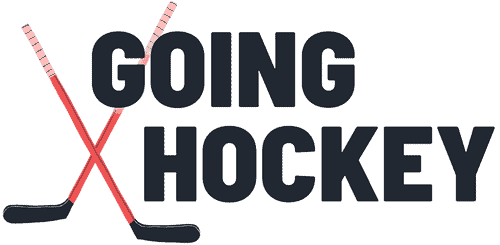In the dynamic realm of ice hockey, where agility and protection collide, the fundamental gear worn by players extends to a critical component known by various names – introducing the exploration into what hockey pants are called and their pivotal role.
What are hockey pants called?
Hockey pants are also commonly referred to as “pants” or “girdles.” Additionally, some players might simply call them “breezers” or “shorts.”

What Are Hockey Pants Called?
Hockey pants, a vital piece of protective equipment in ice hockey, are known by various names, including “pants,” “girdles,” and “breezers.” These terms are often used interchangeably, depending on regional preferences and player colloquialisms.
Here’s a breakdown of how different terms are commonly used in specific areas:
- Pants
- The term “pants” is the most widespread and commonly used term for hockey pants, particularly in Canada and the majority of the United States. It’s a straightforward and descriptive term that’s widely understood by hockey players, fans, and enthusiasts in these regions. “Pants” is the default name used by many players and is commonly heard in locker rooms and discussions about hockey equipment.
- Girdles
- The term “girdles” is often used in the New England region of the United States, particularly around the Maryland area. This name is more specific and typically refers to a certain style of hockey pants – the streamlined, compression-like girdles that offer a close fit and enhanced mobility.
- Breezers
- The term “breezers” is a distinct regional term that has its roots in the state of Minnesota, United States. It’s a colloquialism that refers to hockey pants and is used more commonly in this specific region. The origins of the term may be linked to the baggier appearance of traditional hockey pants, allowing for more air circulation.
- Shorts
- While less common, the term “shorts” may be used more frequently in the United Kingdom and parts of Europe. This regional variation in terminology could stem from linguistic differences and the broader use of the term “shorts” to describe lower body garments in general.
These regional variations in terminology highlight the unique linguistic influences and traditions within different hockey communities.
Despite the diversity in names, the underlying purpose of the equipment remains the same: to provide protection and comfort for players during the fast-paced and physical game of ice hockey.

What Is The Difference Between Hockey Pants And Hockey Girdles?
Hockey pants and hockey girdles are both pieces of protective equipment worn by ice hockey players, but they have distinct differences in terms of design, fit, and functionality. Here’s a breakdown of the key differences between the two:
- Hockey Pants
- Design
- Hockey pants resemble traditional pants with a wider, looser fit. They cover the entire lower body, including the hips, thighs, and tailbone. The design is often more baggy and offers a classic hockey look.
- Padding
- Hockey pants feature built-in padding that provides protection against impacts and falls. The padding is strategically placed to cover vulnerable areas and reduce the risk of injuries. The padding is integrated into the pant itself, and players don’t need to wear an additional “shell” over the pants.
- Fastening
- Hockey pants are typically secured using belts, straps, and elastic closures. The fit can be adjusted to ensure that the pants stay in place during gameplay. The pants can also be fastened using suspenders if desired.
- Airflow
- Due to their baggy design, hockey pants may have slightly more airflow and ventilation compared to girdles, which could help regulate body temperature.
- Design
- Hockey Girdles
- Design
- Hockey girdles have a more streamlined and compression-like design. They closely resemble athletic shorts or compression shorts. Girdles are designed to fit snugly against the body for maximum mobility and flexibility.
- Padding
- Girdles also have integrated padding, but the padding is typically thinner and more strategically placed to maintain mobility while providing adequate protection. The padding in girdles tends to focus on crucial impact areas.
- Fastening
- Girdles usually have an elastic waistband and don’t rely on belts or straps for adjustment. The snug fit of girdles eliminates the need for additional adjustments during play.
- Shell
- Hockey girdles typically require an additional garment called a “shell” to be worn over them. The shell is a cover that goes over the girdle, purely for aesthetic reasons.
- Design

What Are Long Hockey Pants Called?
Long hockey pants that cover the entire lower body, including the legs, are commonly referred to as “cooperalls.”
The term “cooperalls” specifically refers to a style of hockey pants that were introduced in the 1980s by the Cooper brand. These pants extended down to cover the legs and were designed to be worn without separate hockey socks.
Cooperalls were made from a single piece of fabric and were intended to offer improved aerodynamics and comfort. However, they were met with mixed reactions from players and officials and did not become a lasting trend in hockey equipment.
What Happened To Long Hockey Pants?
Cooperalls were ultimately banned by the National Hockey League (NHL) in 1982.
The ban came after a brief period during which some teams and players experimented with wearing Cooperalls on the ice. The NHL cited concerns about safety as well as competitive balance as the primary reasons for the ban.
The snug fit of Cooperalls, while intended to provide benefits like improved aerodynamics and reduced bulk, raised concerns about player safety.

The single-piece design lacked the added protection of traditional hockey socks, which could lead to increased vulnerability to cuts and injuries caused by skate blades. Additionally, the lack of separate socks could potentially hinder the effectiveness of leg padding, exposing players to more direct impacts.
Furthermore, competitive balance was also a factor in the decision to ban Cooperalls. Some players and teams believed that the pants provided certain advantages, such as a more streamlined fit, which could potentially impact the fairness of the game.
As a result of these safety and competitive concerns, the NHL banned the use of Cooperalls in the 1982-1983 season. Players were required to return to wearing traditional hockey pants and separate socks.
While Cooperalls may not have become a lasting trend in the hockey world, their short-lived presence left a mark on the history of hockey equipment experimentation and innovation.


Leave a Reply